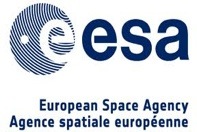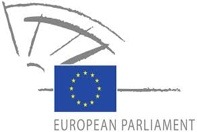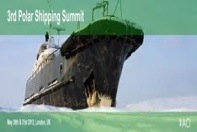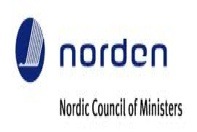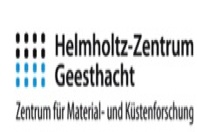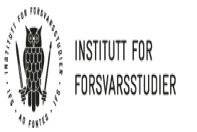Ruling on the EU Seal Products Trade Ban: Commentary on the Ruling of the European Court of Justice – General Court, Case T-526/10, of April 27, 2013
Commentary by Nikolas Sellheim, Arctic Forum Foundation Research Fellow specialized in seals issues and Phd student at the Faculty of Law at the University of Lapland.
In its judgement on the application for annulment of Regulation 737/2010 laying down detailed rules on the implementation of Regulation 1007/2009 European Parliament and the Council on trade in seal products, the General Court reaffirms the legality of the seal products trade ban (basic regulation) and its implementing regulation. It dismissed the pleas brought forth by individual Inuit hunters from Greenland and Canada, hunting and fur trapping organizations, seal traders and seal processors.
Details will not be reproduced here and only few aspects of the judgement are made reference to. A critical claim that underlies the principle reasoning of the Court is the absence of animal welfare elements in the basic regulation. Indeed, animal welfare is not the primary objective of the regulation and of the ban itself, but rather the harmonization of the EU’s internal market. However, the judgement does not consider the crafting process of the ban and the incentive of crafting a seal products trade regulation was set out to tackle: potential animal welfare deficits in the commercial hunt of seals.
The General Court argues that the legality of the ban is confirmed by recourse to Art. 95 TEC on exclusive competence in harmonizing the internal market, and dismisses the applicants’ argument that the Community does not hold legal competence in regulating animal welfare issues due to the absence of animal welfare aspects in the basic regulation. Therefore, any reference in regard to the legal basis which may be linked to animal welfare is not admissible in the context of annulment of regulation 737/2010. While from a legal perspective and considering the legal framework of the basic regulation this approach is clear-cut and consistent with EU case law, the judgement exposes the inherent difficulties of jurisprudence and law-making vis-à-vis socio-ecological systems and knowledge within the policy-making processes:
1. By reaffirming the legality of the ban, the General Court also reaffirms the negative reputation commercial seal hunting holds. While it is certainly not in the court’s mandate to evaluate political developments, this is nevertheless problematic since the crafting process of the basic regulation did not include in situ research and is based on gaps in knowledge of the socio-ecological systems in which commercial seal hunting is embedded. The reaffirmation of the ban’s legality therefore discourages further debate on potential animal welfare shortcomings and their improvement within the commercial seal hunt, and locates the commercial seal industry, the hunters and workers in a corner of ‘needlessness’ and ‘misconduct.’ This inevitably contributes to a biased depiction on the commercial sealers and the sealing industry as such. The judgement therefore underlines the bad label of the industry and hunters and undermines a rational discourse on the rights and needs of the commercial sealers and industry employees themselves, who within the discussion surrounding commercial seal hunting have gone unheard for decades.
2. The General Court’s political independence isolates the seal ban regulations from the policy-making process that have led to the conclusion of the ban and locates it within a strictly legal framework. Moreover, the court is not a means to evaluate potential shortcomings in policy-making, but merely responds to the issues presented to it. Therefore, the negligence of the notion of animal welfare within the regulations is justified as indeed animal welfare is not the basic regulation’s prime objective, as claimed by the plaintiffs. By legally underlining the basic regulation’s primary goal of internal market harmonization, the General Court directly challenges the incentive of the ban itself: the improvement of animal welfare in seal hunting, which through the absence of best practices ultimately are dependent on Canadian and not European animal welfare regulations. Interestingly, by isolating the regulation from animal welfare, upon which the crafting process was built, it can be argued that the General Court has also ruled in favour of Canadian animal welfare standards, practices and regulations in and for seal hunting, under which, based on veterinary research, both the killing methods and enforcement make the commercial seal hunt a legitimate activity.
3. The General Court rules that Inuit communities have failed to provide sufficient evidence for an adverse effect of the ban on their communities, impairing their right to property and the associated right to be heard. It cannot be assessed what type of evidence the Court requires in order to prove adverse effects on living conditions and property or what evidence the applicants did present. However, if the applicants aim to appeal the Court’s judgement it remains to be seen if the report issued by the Government of Nunavut on the impacts of the EU seal products trade ban in Nunavut[1] will be used and accepted as evidence. Once again, however, in order to provide evidence that can stand before the court, intensive in situ research is necessary which underlines the difficulties in connecting law and knowledge. This research in all probability would have to be carried out by the plaintiffs.
The ruling of the European General Court has caused much distress among the Inuit and in the sealing industry and has had a significant influence on the postponement of the decision to accept the EU as an observer in the Arctic Council. It remains to be seen if the applicants lodge an appeal. In Newfoundlandand Nunavut, however, the reputational damage the seal products ban itself and the recent ruling have caused for the European Union is significant. However, irrespective of the larger implications of the ruling, as a technical element and based on the General Court’s affirmation of the functional absence of animal welfare in the seal products ban, the European Commission should remove the information concerning the seal ban from its DG Environment website, under which it can be found under Nature – Animal Welfare. Instead it should be relocated to DG Internal Market and Services, since the main purpose of Regulation 1007/2009, as re-affirmed by the General Court, is the harmonization of the EU’s internal market. Thus, in its entirety and in the political discourse surrounding the ban, the notion of animal welfare should be removed.
Written by Nikolas Sellheim
Research Fellow Arctic Forum Foundation and Phd student at the Faculty of Law at the University of Lapland
[1] Government ofNunavut, Department of Environment. (2012). Report on the Impacts of the European Union Seal Ban, (EC) No. 1007/2009, in Nunavut. Iqaluit: Department of Environment


